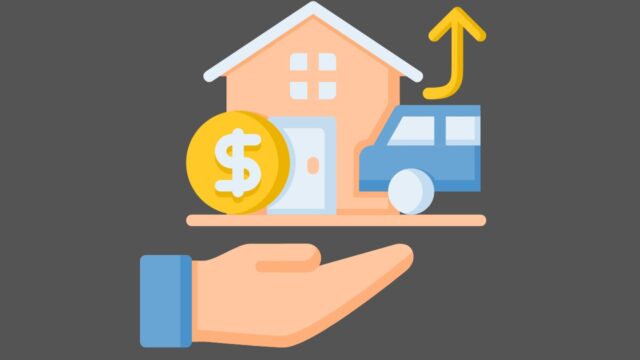
Definition of Noncurrent assets
Noncurrent assets, also known as fixed assets or long-term assets, are resources that a company expects to use for more than one year. These assets provide a company with the infrastructure and resources necessary to operate and generate revenue over the long term. Noncurrent assets include items such as property, plant, and equipment, long-term investments, and intangible assets.
Importance of Noncurrent assets in a company’s financial health
The importance of noncurrent assets in a company’s financial health cannot be overstated. Noncurrent assets provide a company with the means to produce goods or services and generate revenue. They also serve as collateral for loans and can contribute to a company’s creditworthiness.
Proper management of noncurrent assets is therefore crucial for a company’s long-term financial success. Understanding and effectively managing noncurrent assets is an essential aspect of financial planning and decision-making for any company.
Types of Noncurrent assets
Property, plant, and equipment – Property, plant, and equipment (PP&E) refers to physical assets that a company uses in its operations, such as buildings, machinery, vehicles, and equipment. These assets typically have a long useful life and are used to produce goods or services for the company.
Long-term investments – Long-term investments are assets that a company holds for more than one year with the expectation of generating income or capital appreciation. Examples of long-term investments include stocks, bonds, and real estate.
Intangible assets – Intangible assets are nonphysical assets that have monetary value, such as patents, trademarks, copyrights, and brand value. Intangible assets can be a significant source of value for a company, as they can provide a competitive advantage and generate revenue through licensing and other means.
It’s important to note that noncurrent assets are distinguished from current assets, which are resources that a company expects to convert to cash or use up within one year. Examples of current assets include cash, accounts receivable, and inventory.
Calculating the value of Noncurrent assets
Depreciation
Depreciation is the process of allocating the cost of a noncurrent asset over its useful life. This is done to reflect the fact that the asset is being used and is losing value over time. Depreciation is a noncash expense, meaning that it does not involve any actual cash outlay.
Instead, it is recorded as a reduction in the value of the asset on the balance sheet. There are several methods for calculating depreciation, including straight-line, accelerated, and declining balance methods.
Amortization
Amortization is the process of allocating the cost of an intangible asset over its useful life. Like depreciation, amortization is a noncash expense that is recorded as a reduction in the value of the asset on the balance sheet. Amortization is used to reflect the fact that the asset is being used and is losing value over time. Examples of intangible assets that are amortized include patents, trademarks, and copyrights.
Both depreciation and amortization are important for accurately reflecting the value of noncurrent assets on a company’s financial statements. They help to ensure that the value of the assets is properly matched with the revenue they generate, which is a key principle of accrual-based accounting.
Managing Noncurrent assets
Tips for maximizing the value of Noncurrent assets
Here are some tips for maximizing the value of noncurrent assets:
- Proper maintenance and repair: Regular maintenance and repair of noncurrent assets can help to extend their useful life and ensure that they are operating at optimal efficiency. This can help to reduce the need for costly repairs or replacements in the future.
- Periodic evaluations: It’s important to periodically evaluate the performance of noncurrent assets to identify any that may be underperforming. This can help to identify opportunities to improve efficiency or divest underperforming assets.
- Utilize tax benefits: Many countries offer tax incentives for companies that invest in noncurrent assets. It’s important to be aware of these incentives and to take advantage of them when appropriate.
Common pitfalls to avoid in Noncurrent asset management
Here are some common pitfalls to avoid in noncurrent asset management:
- Failing to properly maintain and repair noncurrent assets: Neglecting maintenance and repair can lead to premature failure of the asset, resulting in costly repairs or replacements.
- Overinvesting in noncurrent assets: It’s important to carefully evaluate the potential returns on noncurrent asset investments and to avoid overinvesting.
- Not utilizing tax benefits: Failing to take advantage of tax incentives can result in missed opportunities to reduce the cost of noncurrent asset purchases.
- Not properly accounting for noncurrent assets: It’s important to accurately record the value of noncurrent assets on financial statements and to properly account for depreciation and amortization.
Conclusion
In conclusion, noncurrent assets, also known as fixed assets or long-term assets, are resources that a company expects to use for more than one year. These assets, which include property, plant, and equipment, long-term investments, and intangible assets, are a crucial component of a company’s financial health.
Noncurrent assets provide a company with the infrastructure and resources necessary to operate and generate revenue over the long term. Proper management of noncurrent assets is therefore crucial for a company’s long-term financial success. This includes strategies such as proper maintenance and repair, periodic evaluations, and utilization of tax benefits.
It’s also important to accurately record the value of noncurrent assets on financial statements and to properly account for depreciation and amortization. By understanding and properly managing noncurrent assets, companies can position themselves for long-term financial success.


































